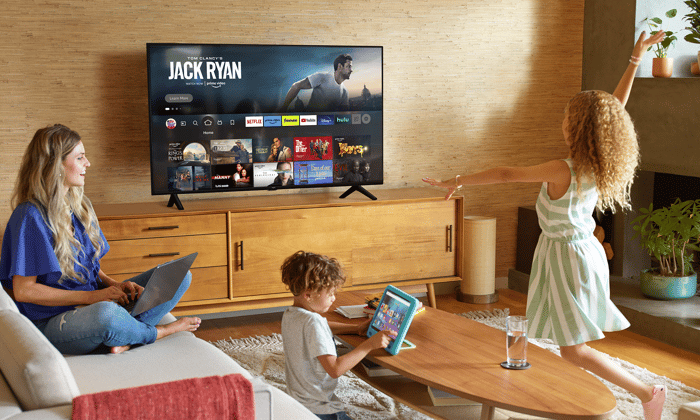Amazon (AMZN 1.62%) Prime is making a big change to its membership later this month, and while some members might not like it, investors should love it.
Starting on Jan. 29, Prime Video subscribers will start seeing ad breaks in the middle of their favorite shows like Jack Ryan and The Lord of the Rings: The Rings of Power. If they don't want to see ads, Amazon will offer the chance to upgrade Prime subscriptions to an ad-free tier for $2.99 per month.
The move follows similar ad-tier introductions from Disney (NYSE: DIS) and Netflix (NASDAQ: NFLX). Both said they've seen a lot of success with their ad-supported tiers, and Bank of America analyst Justin Post thinks Amazon can see comparable benefits. He estimates the change will add $4.8 billion in revenue for Amazon between the higher-priced tier and additional ad revenue. And since the marginal cost of introducing ads to Prime Video is minimal, almost all of that will flow to Amazon's bottom line.
Here's what investors can expect when Amazon introduces ads in Prime Video.

Image source: Amazon.
The undeniable success of ad-supported streaming
The big media companies have been making their ad-supported tiers more and more attractive to consumers over the last year.
Amazon is following the same pricing strategy Disney adopted when it introduced its ad-supported tier for Disney+ in 2022. If subscribers didn't want to pay an extra $3 per month, they could pay the same price they had been and sit through a few ads. Last year, Disney raised prices again, but only on the ad-free versions of its streaming services.
Netflix introduced a low-priced ad-supported version of its service in late 2022. Subsequently, it removed the ability to sign up for its basic ad-free plan and raised the price on ad-supported plan for existing subscribers.
The move points to a clear preference for streaming services to push consumers to their ad-supported tier. Disney CEO Bob Iger told analysts as much during last year's second-quarter earnings call. He'd much rather have subscribers sign up for the ad-supported tier, "the obvious reason [being] because the ARPU potential of the ad service Disney+."
Netflix is seeing a lot of success generating ad revenue, too. In its first-quarter earnings report last year, the company said its ad-supported tier generated more revenue per account than its standard subscription plan, which charged $8.50 more per month. And that was in the middle of a weak advertising market.
Amazon will attempt to capture that massive upside of advertising by defaulting subscribers to the ad-supported tier. That could result in a huge new audience for advertisers when the company flips the switch on the ad tier. And it could be a massive benefit for investors.
Just how big is the opportunity for Amazon?
Post breaks down his analysis of the Prime Video advertising opportunity simply.
He thinks 70% of Amazon's 150 million Prime Video viewers won't do a thing with their subscription. They'll accept the ads in exchange for not having to pay anything more per month for Prime (or go through the hassle of changing their subscription). The other 30% -- 45 million people -- will pay the extra $2.99 per month.
Importantly, the cost for Amazon to implement the new ad-supported tier is minimal. Amazon already has a massive advertising business that brought in more than $43 billion over the previous 12 months through the third quarter of last year. It also already has limited advertising in Prime Video during its sports broadcasts like Thursday Night Football. In other words, all the infrastructure is in place for the company to sell and deliver a lot of advertising for Prime Video.
So practically all of that additional revenue will flow to Amazon's operating income. Post points out that should further boost Amazon's operating margin, which is already approaching recent highs. He believes the Prime video changes could add another 50 basis points to Amazon's North American operating margin.
Amazon's stock climbed higher in 2023 on the back of beating Wall Street's earnings expectations in each of the first three quarters of the year. If Post is right about the impact of advertisements in Prime Video, it could result in another earnings beat and drive the stock higher still.





